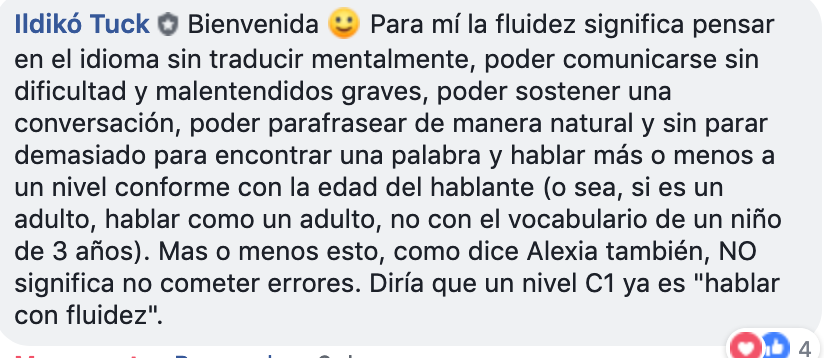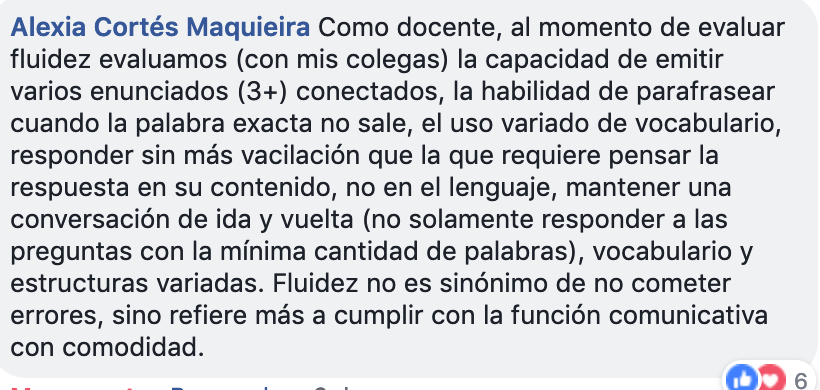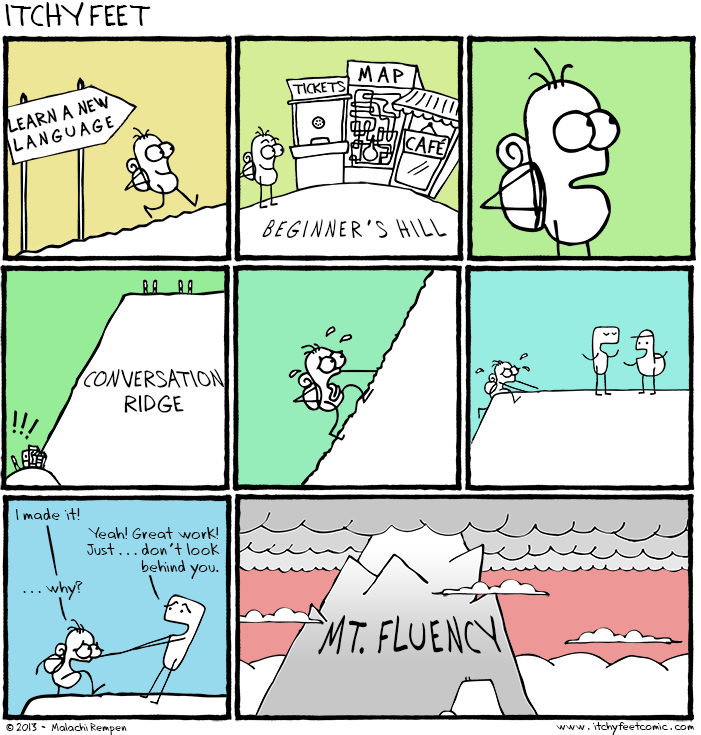FLUENCY IN SPANISH
19 February, 2019

What does it mean to be fluent in Spanish?
Let’s first explain the meaning of fluency in any language so that we can have a better understanding.
So what can be defined as fluency?
– Speaking perfectly?
– Being indistinguishable from native speakers?
– Not making any mistakes whilst speaking?
– Being able to speak about any topic without problems?
– Not having an accent?
Not exactly. Fluency doesn’t mean perfection, in word usage nor in pronunciation. This concept is not also about accuracy, although this is relatively needed to be understood.
Fluency refers to the ability to converse clearly and effectively, as when you’re able to speak and understand a language enough that it doesn’t hinder your ability to communicate. So it means that you are able to use a language easily, with skill and without interruptions, expressing your thoughts in a more automated, fast and spontaneous way, even if you still make some mistakes.
In Spanish –or any other language- you don’t have to understand or speak 100%, but you need to keep things flowing. Furthermore, if there’s a word you don’t know, you’re able to explain it in Spanish. Therefore, we can say that fluency in Spanish is the ability to express yourself in the language without even thinking about what you need to do in order to keep a conversation going.
Being fluent presupposes a large vocabulary, strong listening comprehension, and grammar knowledge. Fluency corresponds to B2-C1-C2 on the European Common Framework of Languages.
Since fluency is a spectrum –nor a final state- we also believe that there are also different degrees of fluency, like conversational fluency or fluency.
Conversational Fluency vs. Fluency
In any language, both terms refer to a spectrum of proficiency. Conversational fluency is a lower level of fluency.
– Conversational Fluency in Spanish
You have conversational fluency when you can enter into basic conversation with a native speaker. By basic conversation we mean talking about things that you see around you, hobbies, the weather, likes and dislikes, food, and things about your daily life.
Knowing about 2000-3000 words in Spanish together with basic structures should enable you to carry out day-to-day conversations with native speakers of Spanish with reasonable accuracy. We estimate a range between 300-480 hours for absolute beginners and beginners to reach conversational fluency.
You should consider you need to pass through a conversational fluency level to reach fluency level in Spanish. This means you need to make discomfort comfortable—and not only that, but that discomfort needs to become a learning tool to reach the next level.
Don’t get stuck on perfectionism. Aiming for conversational fluency gives you a stepping stone on the path to full fluency and then mastery.
– Fluency in Spanish
Speaking with fluency is being able to use the language naturally without thinking too much about what you want to say or how to say it. Usually, fluency comes with the correct use of the language but with a 5%-10% margin of error. However, these errors don’t interfere with the comprehension of your speech. Even we native speakers make a lot of mistakes while speaking, but it doesn’t mean we don’t speak fluently.
To be fluent in Spanish implies overcoming the intermediate plateau. Fluency literally means “to flow”, as when having complete conversations with similar comfort and ease as a native speaker in social settings.
As we have mentioned, fluency is a spectrum, therefore different students will need a higher or lower level depending on their interests and what they have conversations about. We estimate a range between 400-560 hours to get to this level coming from an intermediate level.
Although fluency usually refers to oral communication, nowadays exists some kind of synchronous communication (like chats or messaging: Whatsapp, Messanger, Skype) where the way you communicate is faster and more similar to oral communication. So for us to be fluent is also about mastering synchronous writing.
We have also asked what fluency is to one of our favorite Facebook groups Español intermedio y avanzado. And these are some of the best comments answering the question What does fluency mean to you?





In conclusion, we would like to highlight that achieving fluency in Spanish is difficult. It requires months or years of actual conversational practice with native speakers. However, becoming fluent in Spanish is highly attainable if you are consistent and disciplined with your method.
Finally, we would like to share this representative and funny photo that sums up our explanation perfectly:

Do you need a little bit more help with MR. FLUENCY? The following post explains how to become fluent in Spanish with 7 tips to achieve this. Come on! No more excuses!
(Spanish version of this post here)
YOU CAN DO IT!

Soy profesora de español y tengo más de 5 años de experiencia enseñando en todos los niveles, desde nivel principiante a avanzado.




